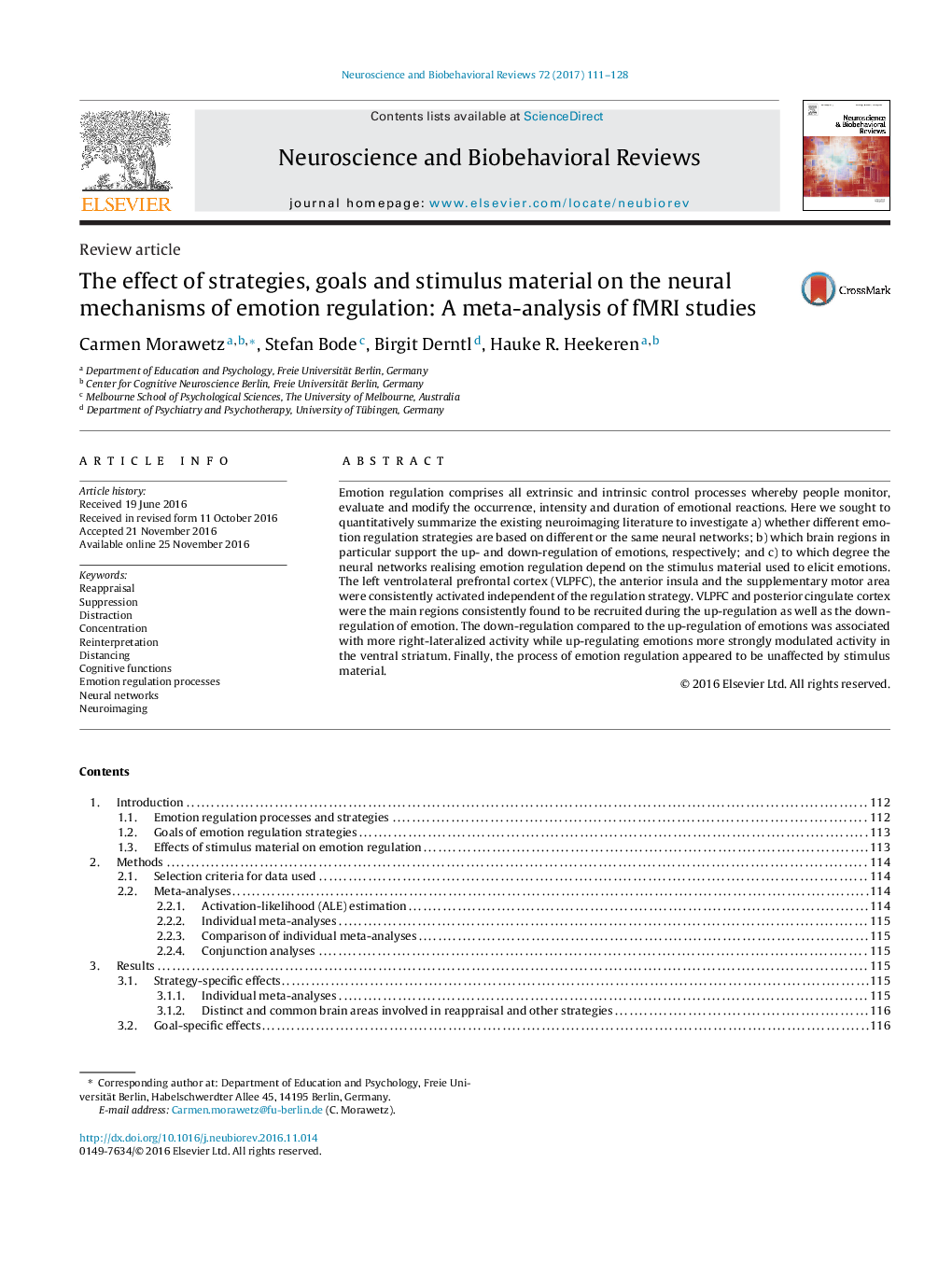| Article ID | Journal | Published Year | Pages | File Type |
|---|---|---|---|---|
| 5043645 | Neuroscience & Biobehavioral Reviews | 2017 | 18 Pages |
â¢VLPFC, anterior insula and SMA were activated independent of regulation strategy.â¢VLPFC and PCC were recruited during up- and down-regulation of emotion.â¢Down-regulation of emotions was associated with more right-lateralized activity.â¢Up-regulating emotions more strongly modulated activity in the ventral striatum.â¢The emotion regulation network was found to be largely stimulus-independent.
Emotion regulation comprises all extrinsic and intrinsic control processes whereby people monitor, evaluate and modify the occurrence, intensity and duration of emotional reactions. Here we sought to quantitatively summarize the existing neuroimaging literature to investigate a) whether different emotion regulation strategies are based on different or the same neural networks; b) which brain regions in particular support the up- and down-regulation of emotions, respectively; and c) to which degree the neural networks realising emotion regulation depend on the stimulus material used to elicit emotions. The left ventrolateral prefrontal cortex (VLPFC), the anterior insula and the supplementary motor area were consistently activated independent of the regulation strategy. VLPFC and posterior cingulate cortex were the main regions consistently found to be recruited during the up-regulation as well as the down-regulation of emotion. The down-regulation compared to the up-regulation of emotions was associated with more right-lateralized activity while up-regulating emotions more strongly modulated activity in the ventral striatum. Finally, the process of emotion regulation appeared to be unaffected by stimulus material.
